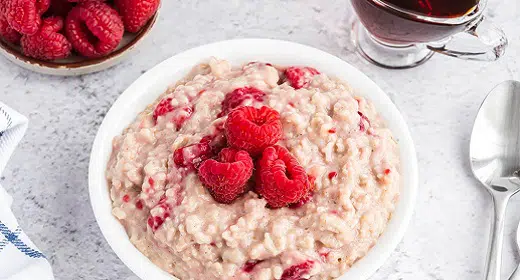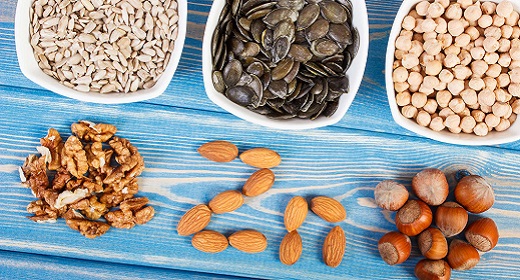by Ocean Robbins: If you’re a fan of conspiracy theories, you’ll love the one about miracle berries…
We are proud to announce a new partnership with John and Ocean Robbins and the Food Revolution to bring our readers Summits, Seminars and Masterclasses on health, nutrition and Earth-Conscious living.
Miss Your Chance to Attend for FREE!
And the roots of the idea (pun semi-intended) go back much
There’s a plant that grows in West Africa called Synsepalum dulcificum, which produces berries that do a remarkable thing — they flip your taste buds’ sensation of sour, making those foods taste sweet. Immediately after eating some of the mildly sweet berries, you’ll experience acidic foods like lemons and limes as extremely sweet. The effect lasts for about an hour.
The mechanism was discovered by a Japanese researcher, Kenzo Kurihara, in 1968, when he isolated a glycoprotein in these “miracle berries” that he called “miraculin.” It binds with taste receptors on your tongue and convinces them that sour is now sweet.
If your mind tends towards entrepreneurship, you might be thinking, “Holy cannoli, I could make a fortune adding this stuff to berry recipes and sugar-free desserts that people would go nuts over.” You might even see yourself on a platform on a sunny day in Stockholm, Sweden, accepting the Nobel Prize in Physiology or Medicine, for having single-handedly solved the global obesity crisis. But you’d be 50 years too late.
Nefarious Berry-Busting
In the 1970s, a biochemistry student named Robert Harvey started a company named, fittingly enough, Miraculin, which produced very sweet and very sugar-free desserts. In blind taste tests, schoolchildren, whom everyone knows are the toughest food critics in the world, preferred the miracle berry desserts to those sweetened with table sugar. The sky was the limit!
Until things got weird. Harvey reported that he was being followed, his office was broken into, and his files were stolen. Shortly thereafter, in 1974, the US Food and Drug Administration (FDA) forbade the use of miraculin in food, calling it an additive and thus requiring extensive testing to prove its safety (despite its use in traditional West African cooking for centuries).
Harvey blamed nefarious interference by the powerful sugar lobby, whom he accused of influencing FDA officials and shutting down his young company.
And half a century later, we’re still trying to find healthy sweeteners that can help our society kick its sugar habit. But we may not be trying hard enough. While the Synsepalum dulcificum berries trick our tongues into the perception of sweetness, there are plenty of other berries that are at once healthy for us and, at the same time, pretty darn sweet all by themselves — no deception required.
And that’s what I want to talk about today — the wonderful world of berries. Or, if you prefer, “Currant Events.” (Sorry about that.)
Three Cheers for Berries
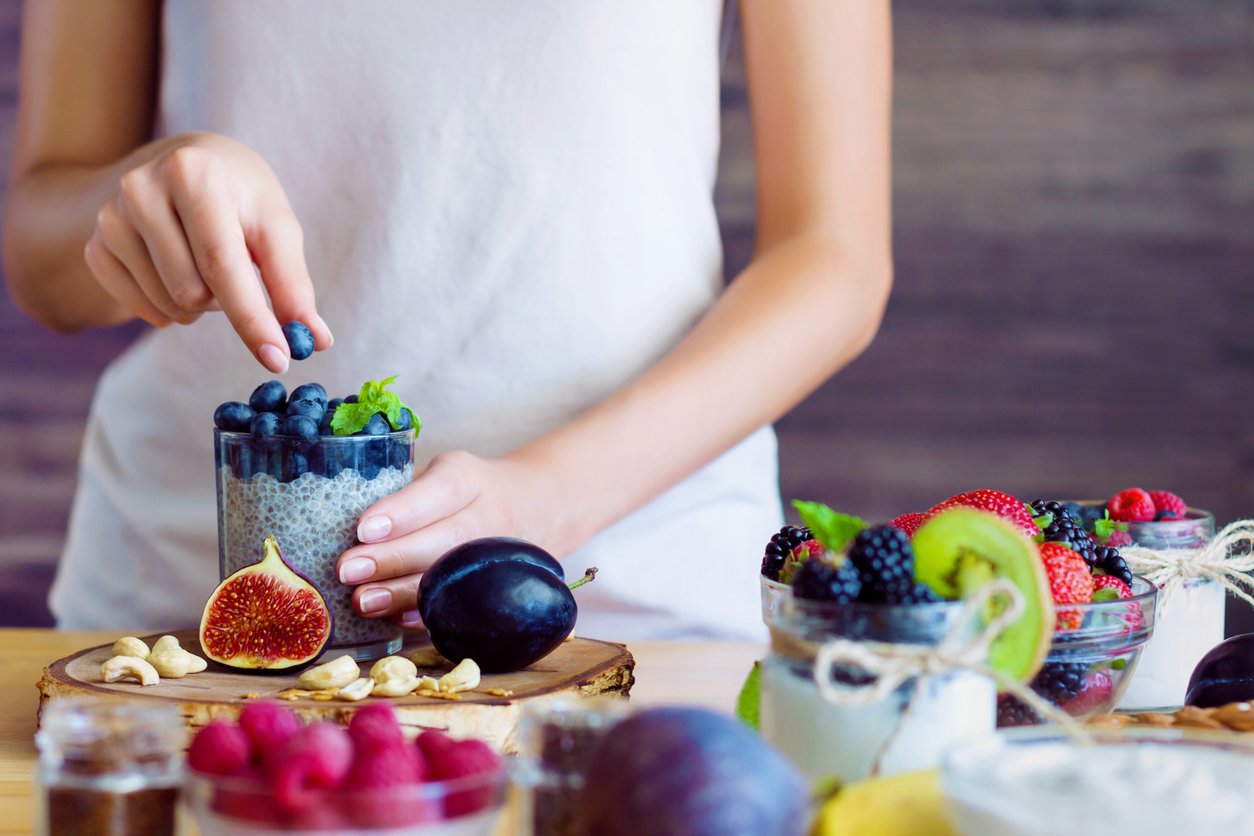
When you think of “superfoods,” you may conjure images of powders made from the roots of rare Amazonian vines, or expensive syrups produced from the extracts of smelly Himalayan fruits. In short: exotic plants from foreign climes (with high price tags, to boot). But there are many superfoods right under our collective noses — foods so familiar that we can overlook them in our zealous quest for optimal health.
Regular old leafy greens come to mind; so do many common herbs and spices. And one of the most powerful kinds of superfoods is the much-beloved family of fruits known as berries.
No less an expert than Dr. Joel Fuhrman considers berries one of the healthiest classes of foods you can eat. They are the second B in his acronym G-BOMBS, a list of awesome, cancer-fighting foods that includes greens, beans, onions, mushrooms, BERRIES, and seeds.
Most folks associate berries with dessert foods. And it’s true that berries are nature’s candy, thanks to their natural sweetness — which appears to be a very clever way to get primates to spread their seeds.
But berry desserts — like blueberry pies and raspberry chocolate bonbons — often contain added refined sugar, and they’re often combined with less than optimally healthy dairy products.
Luckily, desserts are far from the only kind of berry recipes you can make. And if you do make berry desserts, you can absolutely skip (or greatly reduce) the refined sugar. Stick with me, and you’ll discover many ways to use berries, and a bunch of healthy berry recipes, no matter what kind of berry you have on hand. Even a miracle berry, if you can find one!
What Are Berries?
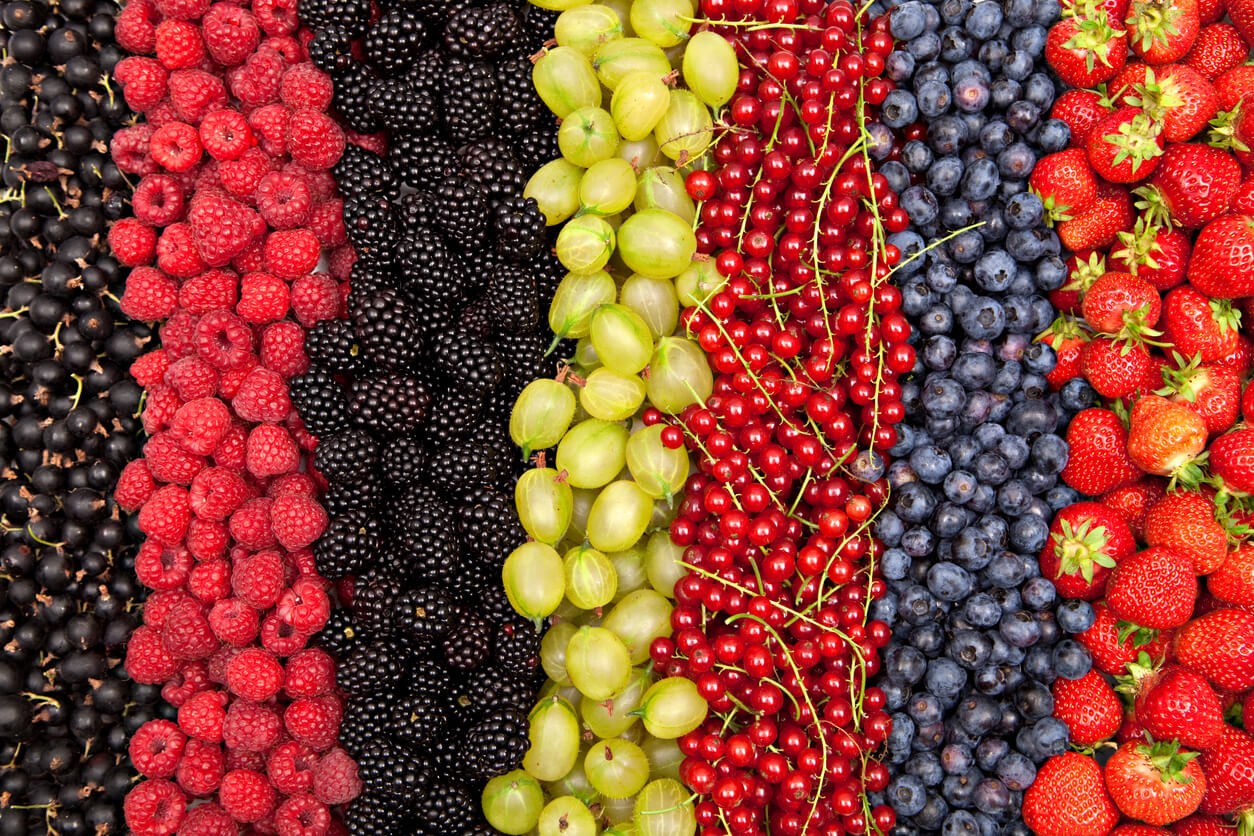
Botanically speaking, a berry is a fleshy fruit that contains lots of seeds. While technically accurate, that’s not a particularly helpful definition since it includes not only plants we think of as berries, but also bananas, tomatoes, and cucumbers.
And to further confuse us, the fruits that leap to mind when we think of berries — strawberries, raspberries, and blackberries — are actually aggregate fruit, with each seeded segment being its own individual fruit. Cranberries and blueberries are, on the other hand, “real” berries.
But let’s be fructo-fluid here, and include any fruit that contains the word “berry” in the category. Oh, and grapes, because they’re eaten like berries (even if most of them have gone seedless), they’re the right size, and they’re so versatile and delicious.
Popular Types of Berries
- Strawberries
- Blueberries
- Cranberries
- Blackberries
- Raspberries
- Grapes
- Açai berries
- Goji berries
- Boysenberries
- Lingonberries
- Gooseberries
- And many more!
Health Benefits of Berries
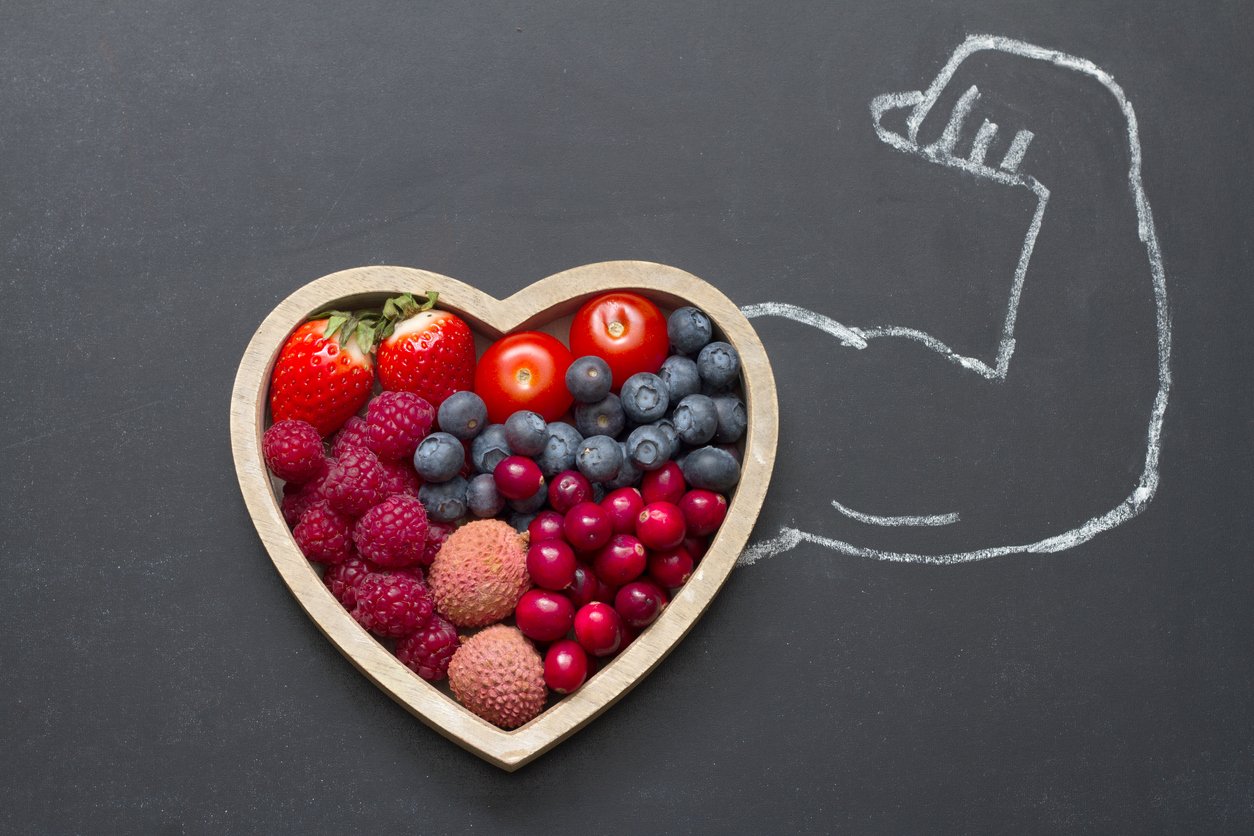
This section could really be a very long book because there are so many berries with so many health benefits. Since they’re so delicious, however, I don’t think they need as much promotional help as, say, rutabagas.
The short story is that berries contain a wide variety of vitamins, minerals, and antioxidants, including vitamin C, folate, and potassium. Many berries’ red or blue/dark purple hues are caused by high levels of ellagic acid and anthocyanins — compounds with so many medicinal benefits that they could get together and open their own pharmacy.
The health benefits of berries may include the following:
Berries and Metabolic Syndrome
Berries can help prevent and treat metabolic syndrome, which is highly associated with many other chronic conditions including obesity, hypertension, type 2 diabetes, high blood levels of triglycerides and LDL cholesterol, and nonalcoholic fatty liver disease. A 2016 review paper stated that “regular long-term consumption of different berries could potentially delay the progression of metabolic syndrome” and the other diseases that accompany it.
Berries Anti-inflammatory Effects in Humans
The polyphenols in berries counter inflammation and oxidative stress, a process often likened to rusting which is responsible for the progression of many diseases and disorders including diabetes, cardiovascular diseases, and cancer.
Antimicrobial Activity of Berries
Berries also exhibit antimicrobial properties, although this should not encourage you to wash your hands with them. The berries that are most antimicrobial are the black ones, thanks to high concentrations of anthocyanins.
Berries Fight Cancer
Berries help fight cancer. Again, the blacker the berry, the stronger the effect — blackberries and blackcurrants are among the foods highest in anthocyanins and ellagic acid that could keep cancer from forming and growing.
Berries Are Good for Your Brain
Berries also protect your brain. One study found that participants who ate blueberries had increased blood flow to key areas of their brains, as well as improvements in memory and attention. Other tests with seniors have found that eating strawberries and blueberries for several months led to improved memory. And a 2012 study published in the Annals of Neurology found that regular consumption of berries was linked to slower rates of cognitive decline — correlating with up to 2 ½ years of added healthy brain function.
Healthiest Berries
Want to play “Berry March Madness” to discover the absolute healthiest berries out there? Here’s a video from Dr. Michael Greger that compares common berries in terms of their antioxidant activity. You might be surprised at some of the rankings.
What to Do With Berries
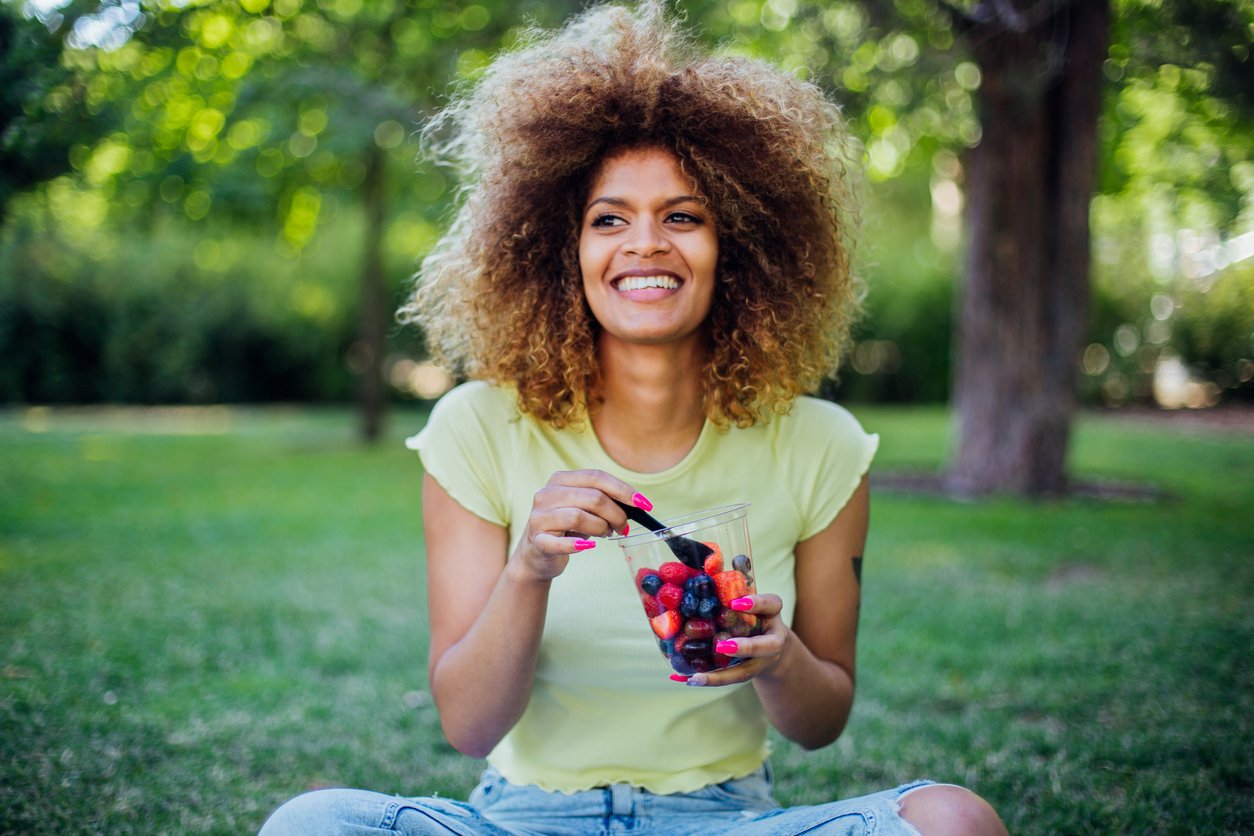
You can eat berries on their own as a delicious snack or side dish — fresh, frozen, or even dried. Many berries require nothing more than washing and popping them in your mouth (ripe blueberries, strawberries, and blackberries come to mind). Or if you’re lucky enough to live near an edible berry patch, you can simply pick and eat them, right on the spot.
But you can also use them fresh, frozen, or even dried in a variety of recipes and dishes:
- Berry desserts (berry cobblers, crumbles, pies)
- Oatmeals and other breakfast foods
- Berry smoothies
- Fruit salad with berries
- Berry dressings and sauces
- Berry jam
- Fruit popsicles
- Use them as a garnish in drinks like mocktails
Fresh Berries vs Frozen Berries
You can use fresh berries for all of the above. The upside of fresh is, well, they’re fresh. The downside is that fresh berries go bad quickly, which shouldn’t be a problem as long as you consume them right away. When purchasing a carton of berries from a grocery store, look carefully to avoid picking up a box that already has a mold situation going on.
For all their health power, berries are delicate, and they don’t travel very well. (If you read that and imagine bushels of blueberries in the truck all going, “Are we there yet?” every five minutes, that’s not what I mean.) Because fresh berries are such finicky travelers — generally preferring climate-controlled air travel to ships and trucks — they can sometimes bring sizable carbon footprints.
Fresh berries can also get expensive. If you’ve ever picked your own, you’ll appreciate that a lot of the expense goes to labor, since hand-picking is almost always better than machine-picking in terms of not damaging the delicate fruits. After spending a couple of hours on your knees on a hot Saturday afternoon tugging raspberries from prickly bushes, you may gladly pay five bucks for a pint that somebody else picked.
And here’s where frozen berries really shine. They are typically less expensive than fresh. They can be picked at the peak of ripeness, and all their nutrients and flavor get locked in by flash freezing. Plus, they don’t degrade nearly as quickly, which eliminates waste and gives them a much longer shelf life. Frozen berries are best in smoothies and popsicles where the whole berry is getting blended. Freezing can also be a good answer for anyone with a hankering for berries in the middle of the winter.
It’s also worth noting, for your health’s sake, to avoid any berries or berry products packed in syrup.
How to Keep Berry Recipes Healthy
If you need proof that commercial berry products aren’t always good for you, I have two words —“pop” and “tart.” Making berry recipes yourself is almost always going to be healthier than commercially available options because you control the ingredients.
There’s no need to add refined sugar to berry recipes. If your taste buds want some extra sweetness, you can add a whole food sweetener. You can also add a bit of fresh citrus juice, whose acid makes the flavor more tart (without the pop).
For berry-based baked goods, avoid bleached and heavily refined flours, and instead use flours that are whole grain and, if you wish, gluten-free — such as legume, oat, or almond flours.
If your budget allows, opt for organic berries to avoid pesticides. This is particularly important with strawberries. Conventional (i.e., non-organic) strawberries are among the “dirtiest” foods when it comes to pesticides, achieving the dubious rank of #1 on the Environmental Working Group’s Dirty Dozen list.
Berry Recipes
Oh, the things you can do with berries to make the most unique, appetizing, and nurturing vegan berry dishes!
Start with a vibrant-colored Pink (Raspberry) Oatmeal breakfast that will satisfy your belly and energize your morning.
Make the Blueberry Ginger Smoothie when you want a little zing with your sweetness. This healing beverage is also a great way to incorporate leafy greens!
Then make the (so yummy it’s drinkable!) creamy Blueberry Balsamic Walnut Dressing and add it to salads and grain bowls.
You can also double the Strawberry Pear Jam so that you can share your healthy and tasty creation with family and friends, while still keeping some for yourself.
Finally, feel like you’re indulging in a rich dessert fruit bar, but know you’re nourishing your body with raw and nutrient-dense, plant-based ingredients, by whipping up the super yummy Strawberry Shortcake Bars!
1.Pink (Raspberry) Oatmeal!

Give your morning oatmeal a boost by adding frozen raspberries to make a flavor-filled and colorful berry dish! Frozen berries can sometimes pack more nutrients and flavor than fresh store-bought ones since they’re picked ripe and frozen soon after being harvested, which helps to preserve both nutrition and flavor. This simple berry recipe is satisfying and nourishing!
2. Blueberry Ginger Smoothie

Naturally sweet blueberries, zesty ginger, and earthy greens make a refreshing and energizing berry smoothie to jumpstart your morning or invigorate your afternoon. This nourishing beverage could also be named the “gut-loving smoothie” given the substantial amount of anthocyanins in the blueberries, fiber in the oats, and gingerol in the ginger — all of which have been shown to contribute to optimal gut health and digestion.
3. Blueberry Balsamic Walnut Dressing

Give your salad or grain bowl a boost in flavor, nutrition, and color with this almost-too-pretty-to-eat Blueberry Balsamic Walnut Dressing. Walnuts make it rich and creamy while offering omega-3 fatty acids and protein. Blueberries make it slightly sweet with a little tart, plus lots of vitamin C, anthocyanins, and fiber. All of the ingredients together make this dressing an outstanding addition to any meal.
4. Strawberry Pear Jam
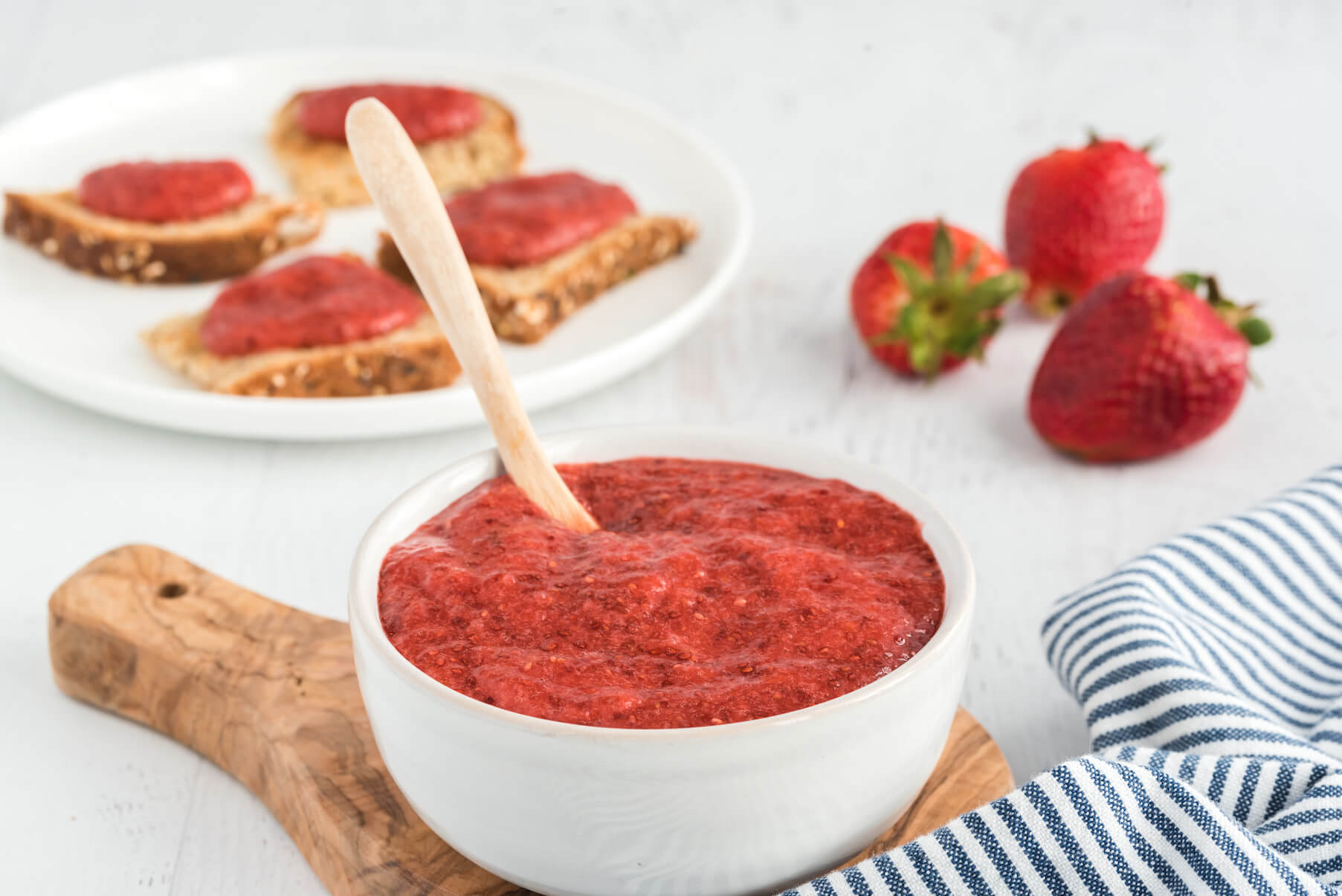
Say bye-bye to that sugar-laden, store-bought jam, and say hello to your very own homemade version that is fruit-filled and easy to prepare! First, cook down the strawberries and pears to transform them into a sweet and juicy reduction. Then combine them with fiber and omega-3-rich chia seeds to make the perfect jam. P.S. Double the batch and store small portions in tiny mason jars so you can share this ultra-tasty spread with family and friends.
5. Strawberry Shortcake Bars
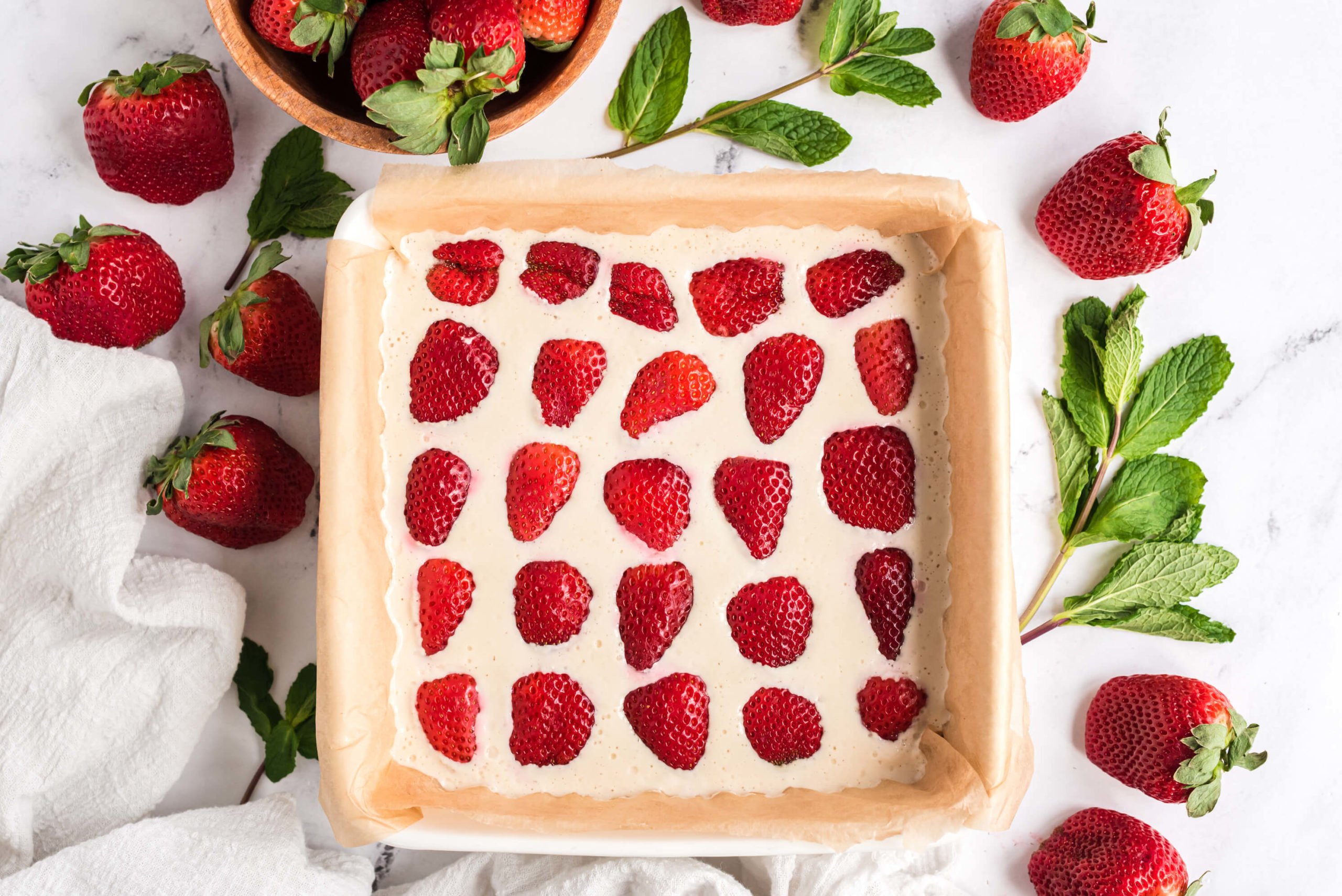
What happens when you start with a nutty crust; add a creamy filling, and top it with fresh fruit? You get whole (raw!) plant-based berry bars that are packed with gobs of nutrition, a variety of textures, AND lots of flavor. These Strawberry Shortcake Bars are one of many ways strawberries can add natural sweetness to healthy desserts, like fruit bars, and avoid the need for added sugar.
Thank You Berry Much!
Berries are among the world’s healthiest (and tastiest!) foods. There are many different types of berries, all with impressive health benefits and nutritional profiles. However, the health benefits of berries are undermined when they’re served with refined sugar, as in many berry desserts. But there are healthier ways to eat berries — including ways that are showcased in the five fabulous recipes we’ve provided. Try them, and you’ll be saying, “Thank you berry much!”
We are proud to announce a new partnership with John and Ocean Robbins and the Food Revolution to bring our readers Summits, Seminars and Masterclasses on health, nutrition and Earth-Conscious living.
Miss Your Chance to Attend for FREE!







